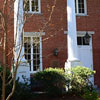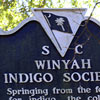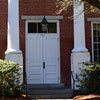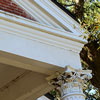Winyah Indigo Society Hall
Established during the Colonial Era, the Winyah Indigo Society was composed of rice and indigo planters who were among the most influential citizens of South Carolina. The existing Winyah Indigo Society Hall was constructed in the 1850s.
Photo Gallery
Click icon to enlarge image. Use arrow keys or
click large picture to cycle through the gallery.
|
Winyah Indigo Society Hall
Itinerary
Add This Site to Your Itinerary
Site Description
The Winyah Indigo Society was established by Georgetown area rice and indigo planters as a fraternal organization in 1755, twenty years before the American Revolution. Indigo was a plant from which royal blue dye was produced. Local planters grew rice on the low wetlands of their plantations and indigo on the high ground. Indigo was exported to Great Britain and for many planters was a financial supplement to rice production. During the Revolutionary War indigo exports to Britain ceased and significant local indigo never resumed.
The first president of the Winyah Indigo Society was Thomas Lynch Senior, a respected local rice planter and political leader who was an influential member of the Continental Congress when American independence was in debate. During the 18th and 19th centuries, Society members - which included much of the Georgetown Country planters' aristocracy - met regularly at the Society Hall which boasted a well-stocked library, and there discussed intellectual, political and agricultural topics. Society members were also instrumental in establishing a free school in Georgetown during the Colonial Era. Constructed in the 1850s, the existing Winyah Indigo Society Hall, noted for its classical design and towering white columns, replaced an earlier structure. In February of 1865, near the end of the Civil War, Federal troops captured Georgetown and reportedly commandeered the hall as a military hospital. |



